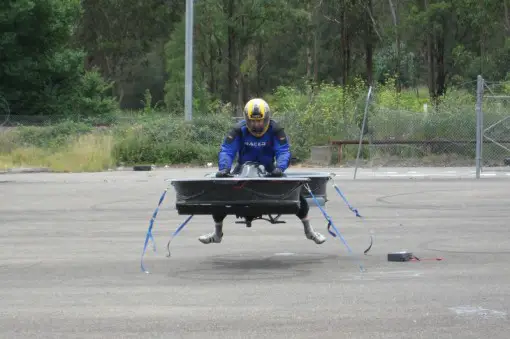 So Google Plus (Google+) is quickly amassing its own number of followers, although it’s probably still a far cry from the number of Facebook users. In less than a month since the launch of Google+, we’ve been seeing a lot of speculations about the number of users. From 10 million to 25 million Google+ users – the numbers are all over the place. Google will probably never tell us the real deal on how many users they have, but there is something more important than knowing just how many people are on the social network. Privacy. [Read more…] about How to Configure Privacy Settings on Google+
So Google Plus (Google+) is quickly amassing its own number of followers, although it’s probably still a far cry from the number of Facebook users. In less than a month since the launch of Google+, we’ve been seeing a lot of speculations about the number of users. From 10 million to 25 million Google+ users – the numbers are all over the place. Google will probably never tell us the real deal on how many users they have, but there is something more important than knowing just how many people are on the social network. Privacy. [Read more…] about How to Configure Privacy Settings on Google+
Featured
Make Your Own Iron Man Palm Laser Weapon

Kids, do not try this at home. Then again, this is a DIY piece, so no one can really stop you from giving the project a go. Just remember, this is no ordinary DIY project. It can hurt you. Literally.
Have you ever heard of Patrick Priebe? ((Source)) Probably not, but my guess is that his name is already making the rounds and geeky DIY-ers and Iron Man fans are already on to him. This lab technician from Germany is an Iron Man fan to the highest level. As if watching the movies every week wasn’t enough, Patrick went ahead and created his own version of Iron Man’s laser thingamajig – the one the shoots out of his palm. (And I thought I was the number one Iron Man fan!) [Read more…] about Make Your Own Iron Man Palm Laser Weapon
Lab Coat Made of LED Functions as TV
Alright, DIY-ers out there. Here is the model for your next project! This labcoat is made of LED and even works as a TV! How much cooler can you get?
The LEB lab coat was made by David Forbes, who had one special mission in mind while he was conceptualizing and creating the coat: to wear his creation at Burning Man. Here’s a peek at the lab coat.

Think of it as a color TV set placed on top of a lab coat that any scientist, doctor, or researcher would wear. And yes, the TV displays NTSC video – no need to fiddle with the settings!
If you’re wondering how this was made possible, think about flex boards and color LED displays (160 x 120 pixels to be exact). If the image above is not exactly to your liking, here’s another one that might prove to be more fun.

Homer is David’s hero – just like countless other people in the universe. You have to admit that, while the resolution of the TV will definitely not compete with your HDTV at home, Homer looks pretty good on the lab coat. Well, you know what I mean. 😉
As you may have surmised, the displays covers pretty much the entire torso, down to the leg – back to front, sides semi-included. The brains of this lab coat cum TV can be found in circuit boards mounted on the shoulders and the hips. The work that has gone into this contraption is not to be taken lightly. Six months – and custom fabricated boards, hot glue, FFC cable, double-sided tape, a host of other electronics, and $20,000 – later, David is ready to be a hit at Burning Man. Did I already say this thing cost $20,000 to complete?
Here’s the TV in action.
I tried to ignore how awkwardly David had to move all throughout the demo. I guess he’s going to have to be ready not to sit or even lean against anything when he shows that thing off at the festival!
For more details and photos of the making of the TV lab coat, visit Cathode Corner.
myCopter: Another Step Towards the Age of Flying Cars?

With news about the Terrafugia being deemed roadworthy hitting the Net recently, hopes for the Age of Flying Cars are sky high. Now, another flying car is in the limelight, making the possibility of flying cars even more of a reality.
This new vehicle is called – rather unimaginatively, I think – myCopter, and it is being touted as a solution to the ever present problem of road congestion. The myCopter is a Personal Aerial Vehicle (PAV) – presumably one of the first of many yet to come – that is aimed to be part of a future personal air transport system (PATS). The idea is for PAVs to be partially or fully autonomous, doing away with the need for air traffic control, which is currently required for airplanes and helicopters. Also included in the concept for a PATS is the fact that PAVs should only be allowed to fly outside controlled airspace, so as not to interfere with the current air traffic.
Brilliant concept – no one can deny that. And if they actually get this system (including the myCopter and other future flying cars) off the ground, I guess we can truly say that this aspect of science fiction has become a reality.
Of course, there are numerous issues that have to be addressed before you and I (and everyone else) will be allowed to man myCopter. Just thinking about all the road accidents we hear about on a daily basis is enough to give anyone the shivers. Now just imagine reckless drivers, not to mention tipsy or drunk ones, taking to the air. For sure, there will always be the moron who will make the air unsafe for everyone else!
Then again, the system designers of myCopter have already taken this into consideration. That is why myCopter is going to be part of a network of flying vehicles. A controlled network, that is. Imagine a cable car system translated into an air system – the myCopters will be programmed to follow formations and avoid obstacles. That may take away from the fun of flying, but in this case, I think safety is a more important consideration. The last thing I want is two myCopters crashing above my house and killing me while I lounge in the garden!
Things That Happen On Internet Every Sixty Seconds
How much time do you spend on the Internet? How often do you send e-mails? How often do you tweet? How often do you post a status message on Facebook? How often do you conduct a search on Google?
The Internet has invaded the life of the average person so much so that you (in all likelihood) cannot go a day without logging in to one service or another. Whether it’s Twitter, Facebook, e-mail, WordPress, Blogger, or what-have-you – one thing is for sure: people are constantly doing something online.
Now I am pretty sure that your curious mind has wondered – at least once – just how much is going on online at any given moment. Well here’s the answer to your question – not exactly in same terms, perhaps, but close enough. An infographic by Shanghai Web Designers ((60 Seconds)) tells you what happens on the Internet every 60 seconds – or every minute.

So…did you know that every 60 seconds…
- more than 694,445 searches are done on Google?
- more than 6,600 photos are uploaded on Flickr?
- more than 600 videos are uploaded on YouTube? This translates to more than 25 hours of viewing pleasure (or displeasure, as the case may be)
- 695,000 statuses are updated on Facebook, 79,364 messages are posted on walls, and 510,040 comments are made?
- more than 168,000,000 e-mails are sent? So who was that again who said that e-mail was dead???
- 98,000 tweets are published on Twitter? I don’t know if this includes RTs and @replies, though.
Pretty impressive numbers, but I think the guys who made this infographic missed one vital stat: that every 60 seconds, an infographic (or two) is published. At least that’s what my Twitter stream and Facebook feed tells me. 😉
Real Life Hoverbike
Admit it. You’ve wanted a hoverboard forever, or anything that hovers and actually works, for that matter. The idea of having a means of going around without wheels touching the ground (without having to take an airplane, that is) is something that most every person dream about. Well, at least most every person that I know.
Thanks to Chris Malloy, a real life hoverbike just might be within our reach in the near future. The hoverbike he is making can be seen below. It has two rotor blades (made from Tasmanian Oak, with the edges being carbon fiber) at the ends, while the seat and control area are in the middle. As you can see, the bike is almost as long as a car!
The bike has an engine packing a whopping 1170cc, with the rotors receiving 80kW each. The designer/maker thinks that the hoverbike has the ability to hover – more like fly – up to 10,000 feet (that’s 3000 meters) and go as fast as 278 kilometers per hour.
Here is how the hoverbike would look like in action.

Thorough testing is set to begin, so that the hoverbikes can be put into production. If you want one (you know you do), you have to start saving up $40,000 as that is supposed to be the base price for the hoverbike. Malloy and his team are willing to make working prototypes for those who cannot wait, though, but I don’t know the price tag of those. Alternatively, donate to their project, and get a chance to win a working prototype.
